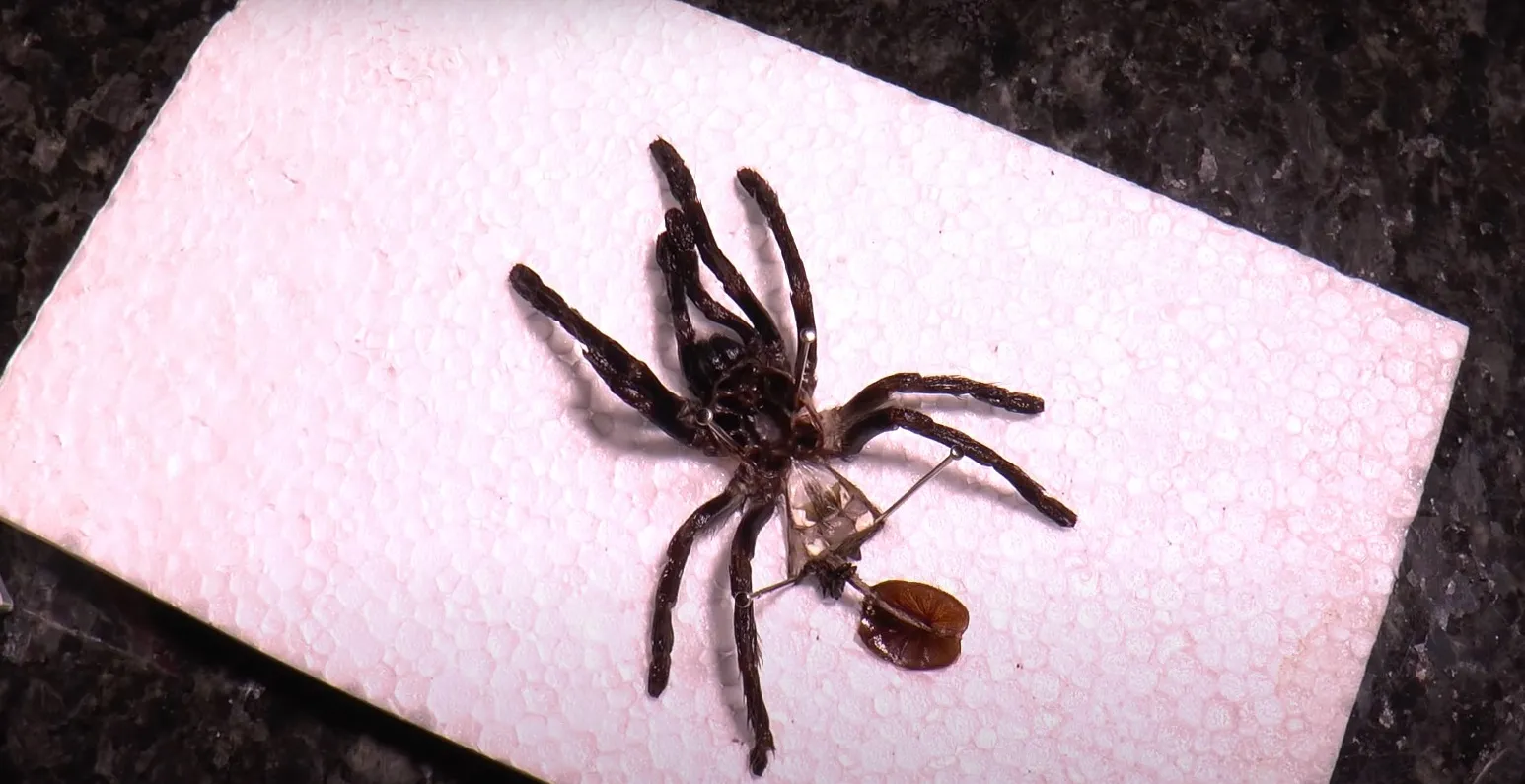Tarantula Male vs Female Amazing Differences
Distinguishing between male and female tarantulas is a fundamental aspect of tarantula ownership, breeding, and overall care. Knowing the differences can affect everything from enclosure size and handling to understanding their behavior and lifespan. The following guide will explore the key differences between male and female tarantulas, focusing on physical characteristics, behavioral patterns, and practical implications for tarantula keepers. From body size and leg span to temperament and lifespan, each characteristic plays a crucial role in understanding these fascinating creatures. By the end of this guide, you will be equipped with the knowledge to identify, care for, and appreciate the unique attributes of both male and female tarantulas.
Size and Appearance
Physical attributes provide significant clues in sexing tarantulas. These visual differences are often the first indicators that keepers use when attempting to determine the sex of their tarantula. Size, leg span, and coloration collectively offer valuable insights that can often, but not always, provide a definitive answer. However, it’s important to remember that these are general guidelines, and individual variation exists.
Overall Body Size

In many tarantula species, females tend to be larger and more robust than males. This difference becomes particularly noticeable as the tarantulas mature. Female tarantulas invest more energy in growth over their longer lifespan, leading to a larger overall body size. This difference is particularly pronounced in larger species. Males, on the other hand, often reach their full size more quickly, focusing their energy on reproduction rather than continued growth. However, body size alone isn’t always a reliable indicator, as factors like nutrition and genetics also influence size.
Leg Span Comparison
Leg span is another significant aspect of the size comparison. Females typically have a greater leg span compared to males of the same age and species. This wider stance contributes to their larger overall presence. While this difference isn’t as obvious in juvenile tarantulas, it becomes more apparent as they approach adulthood. Measuring the leg span can be a helpful method, although it’s best to use this in conjunction with other indicators to confirm the sex.
Coloration and Markings
Coloration and markings can also offer clues, although this varies significantly between species. Some species show subtle differences in color intensity or pattern between males and females. For example, males might exhibit brighter colors or more prominent markings during their final molt, which prepares them for mating. However, this is not a universal characteristic, and it’s essential to know the specific traits of your tarantula species to look for these differences. Observing these variations requires a good understanding of the species’ natural appearance.
Sexual Dimorphism

The overall differences in size, leg span, and coloration are all examples of sexual dimorphism, which is the difference in appearance between males and females of the same species. Recognizing these features is critical to correct identification. Although these traits help with sexing, they aren’t always definitive. Other methods are often needed for confirmation. Careful observation and comparisons are important when utilizing these visual cues.
Behavioral Traits
Beyond physical characteristics, behavior provides another crucial area of differentiation. Temperament, mating rituals, and post-mating behavior all offer insights into the sex of a tarantula. These behaviors often become more apparent as tarantulas mature and are particularly relevant for those looking to breed their tarantulas. These behaviors reveal insights into their roles within the species and can affect how you care for your tarantula.
Temperament Differences
In general, males tend to be more restless and less tolerant than females, especially as they approach maturity. This is particularly true as they get older and begin to look for mates. Females, on the other hand, are often more sedentary and spend more time in their burrows or preferred spots. Their temperament can vary between species and individuals, but the general tendency is that males are more active and less predictable. This can affect how you handle and interact with them.
Mating Rituals

Mating rituals provide some of the most obvious behavioral differences. Males will often become very active, wandering around the enclosure in search of a mate. Once they find a female, they engage in a courtship dance, tapping their legs and vibrating their bodies. This behavior contrasts with the typically more passive behavior of females. Understanding the mating rituals of your tarantula species is essential for breeding.
Post-Mating Behavior
Post-mating behavior differs dramatically. Males often die shortly after mating, as the energy expenditure and the stress of the process take their toll. Females may survive for many years, especially if the mating was successful and they are producing eggs. In some instances, the female may attack and consume the male after mating, which is a natural behavior that contributes to the female’s nutrition, which is necessary for the eggs.
Lifespan Variations
Lifespan is another significant area of difference between male and female tarantulas, influencing their care and the expectations of owners. Females typically live significantly longer than males, which is a key consideration when choosing a tarantula and planning its care.
Average Lifespan of Males

Male tarantulas usually have shorter lifespans. After reaching maturity, males typically live for only a few months to a couple of years. Their primary purpose is to reproduce, and their bodies undergo significant changes during their final molt in preparation for mating. This short lifespan is a result of the energy expenditure associated with mating and their decreased survival instincts after mating. This information is important for keepers when planning for their tarantula’s needs and understanding their life cycle.
Average Lifespan of Females
Female tarantulas have much longer lifespans, often living for many years, sometimes exceeding 20 years or more. Their longer life cycles allow them to molt multiple times and continue growing. Females invest more energy into longevity, which allows them to lay multiple egg sacs over their lifetime. The extended lifespan of females is a significant advantage for tarantula keepers, offering more opportunities to observe their development and behavior.
Molting Characteristics
Molting is a critical process for tarantulas, involving shedding their exoskeletons to grow and replace damaged or worn body parts. Analyzing the molting characteristics can provide valuable insight into a tarantula’s sex, especially regarding frequency and the presence of specific anatomical features.
Molting Frequency in Males

Males often molt less frequently after reaching maturity. Their focus shifts from growth to reproduction, so the need for regular molting decreases. The final molt is especially important, as it’s at this stage that they develop the mature features needed for mating. The intervals between molts become longer, reflecting their reduced growth phase.
Molting Frequency in Females
Females continue to molt periodically throughout their lives, although the frequency decreases as they age. Molting allows them to continue growing and preparing their bodies for reproduction. Each molt provides an opportunity to assess their overall health and the presence of specific structures useful for sex identification. This continuous molting cycle is a major indicator of their long lifespan and overall health.
Spermatheca and Bulbs
Examining the molted exoskeleton provides the most accurate method for determining the sex of a tarantula. Specific anatomical structures can be examined to confirm the gender, helping breeders and keepers alike understand their tarantulas.
Identifying Spermatheca

Female tarantulas possess spermathecae, which are internal structures used for storing sperm after mating. The presence of spermathecae is a definitive indicator of a female tarantula. These structures can be identified by carefully examining the underside of the molted exoskeleton under magnification. This is the most reliable and accurate method for confirming the female sex. The spermathecae appear as sacs or pockets located within the abdomen.
Bulbous Pedipalps in Males
Male tarantulas have bulbous pedipalps, which are the small leg-like appendages near the mouth. These are used for mating, and they develop the bulbous shape after their final molt. The presence of bulbous pedipalps is a definitive indicator of a male. The shape and size of the bulbs will vary slightly by species, but the overall structure will be present. This feature is easily visible under magnification.
Practical Implications for Owners
Understanding the differences between male and female tarantulas has practical implications for owners, particularly when it comes to choosing a tarantula and breeding it. Different care considerations also depend on the tarantula’s sex. Understanding these practical aspects will help owners ensure their tarantulas thrive.
Choosing the Right Tarantula
When choosing a tarantula, consider your goals and preferences. Females are often preferred as pets due to their longer lifespans and more docile temperaments. If you’re seeking a long-term companion, a female might be the better choice. However, male tarantulas can be captivating to observe, especially during their mating behavior. Consider the species, as the size, temperament, and specific care requirements will vary. Ensure you have the appropriate setup for the tarantula, regardless of gender.
Breeding Considerations
If you’re interested in breeding, sexing your tarantulas becomes crucial. You will need to acquire both a mature male and a female. Successfully breeding tarantulas requires thorough knowledge of their mating rituals, enclosure requirements, and post-mating care. It’s essential to provide optimal conditions for successful mating and egg sac production. Research the specific breeding behaviors of your chosen species. This process can be rewarding, but it’s also a significant responsibility. Proper planning and preparation are vital for responsible tarantula breeding.
Conclusion
Differentiating between male and female tarantulas is a fundamental aspect of tarantula keeping, impacting everything from care to breeding. The physical characteristics, behavioral traits, and lifespan variations described in this guide provide a comprehensive understanding of these differences. By understanding these details, keepers can make informed decisions, provide appropriate care, and enhance their appreciation for these amazing creatures. Whether you are a beginner or an experienced owner, knowing the sex of your tarantula is essential. With this knowledge, you are well-equipped to provide a thriving environment and enjoy the unique aspects of each tarantula.
